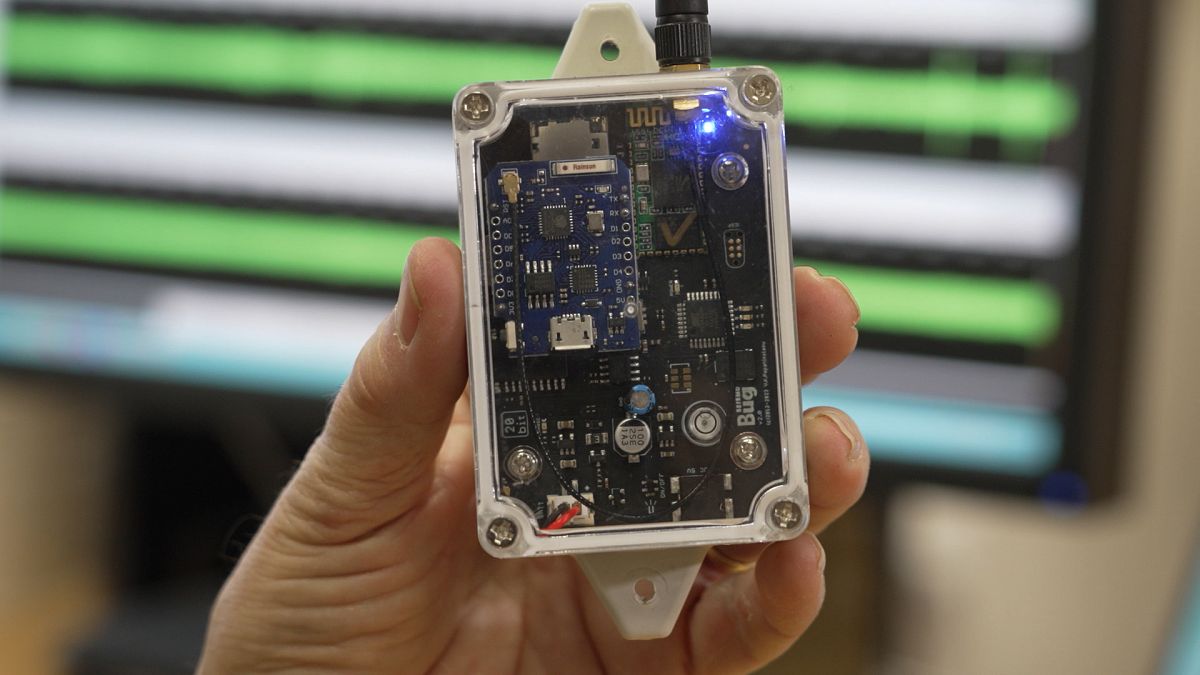Earthquakes: The European project preparing for emergencies

Experts at the Institute of Seismology in Thessaloniki, Greece, monitor tremors in real-time for REDACt, a consortium helping four countries bordering the Black Sea respond more efficiently to earthquakes.
More than 1,200 faults or fractures have been found in the Earth’s crust across Europe, according to the EFEHR, an NGO monitoring earthquake risk across the continent. These faults cover some 90,000 km and cross national borders.
The Earth’s surface is made up of tectonic plates which constantly move due to the currents pushing the magma flowing underneath. An earthquake is triggered along a fault when these plates part or slide into each other.
While it is impossible to stop oceanic and continental plates from moving, disaster prevention and mitigation strategies can save lives and prevent damage to critical infrastructure.
The Rapid Earthquake Damage Assessment Consortium (REDACt), is a cross-border European initiative designed to improve immediate response to earthquake-related phenomena in the Black Sea Basin Region.
Euronews Correspondent Aurora Velez met with the experts behind the project for Smart Regions.
Turkey, Greece, Moldova and Romania have partnered with REDACt to improve cross-border cooperation. Emmanouil Kirtas, the Vice-Coordinator of REDACt and associate professor at the International Hellenic University in Greece (IHU), told Euronews that each of these countries uses the same methodology when monitoring tremours: “After, 10 or 15 minutes, REDACt can provide its first estimations which we then pass on to the authorities,” explained Kirtas.
Why is REDACt’s work so important?
Two earthquakes with magnitudes of 7.8 and 7.6 struck Turkey and Syria on the 6 February 2023. In Turkey alone, tens of thousands of people died and more than one million people were left homeless. Experts pointed to construction negligence and the lack of earthquake-resistant buildings while those living in affected areas criticised the government for not responding fast enough.
REDACt’s objective is for partner countries to go beyond existing practices, coordinate their responses and improve early warning systems.
The project’s top priorities are:
1. Ensure partners share data on earthquake-related phenomena in the Black Sea Basin Region and devise common policies and strategies to lessen the impact.
2. Provide rapid earthquake damage assessment tools to ensure the safety of people living or travelling through high-risk areas.
3. Increase public awareness so that residents know what to do/what not to do in the event of an earthquake.
The total budget for REDACt is almost €1 million or €974,860. The majority of this fund – approximately 92 per cent of it – was provided by the European Union’s Cohesion Policy. Greece, Romania, Moldova and Turkey also contributed.
The Institute of Engineering Seismology and Earthquake Engineering in Thessaloniki (ITSAK/EPPO) is responsible for developing one of the tools designed to monitor earthquakes in the Black Sea Basin.
The institute developed low-cost wireless accelerometres for €100 a piece to measure seismic vibrations. Generally, these devices cost around €7,000-€8,000 on the commercial market. These affordable alternatives were installed on the grounds of 31 schools across Thessaloniki to obtain rapid results.
“This gives us an idea of the amplification of the different geological layers, and it provides data on the seismic action near the specific school, five minutes after the event,” said Nikolaos Theodoulidis, Research Director at ITSAK/EPPO.
This will make it possible to identify the most critical parts of a building after an earthquake has struck and the appropriate emergency measures.
How does REDACt respond in the event of an earthquake?
According to EFEHR, millions of earthquakes hit Europe every year, but most are too small to be felt and don’t have damaging effects.
REDACt sounds the alarm when an earthquake with a magnitude of four or higher hits the Black Sea Basin Region, tremors this strong can cause significant damage to buildings and infrastructure.
A few minutes after an earthquake, REDACt produces maps locating possible landslides or areas where there is soil liquefaction (a phenomenon that occurs when loosely packed, water-logged soil at or near the ground surface loses its strength in response to a tremor and sinks).
“[These maps] are very useful, whether proactively to anticipate scenarios or reactively to determine the areas in which to intervene as a priority after an earthquake,” said Nikolaos Klimis, a Professor in Geotechnical Engineering at the Democritus University of Thrace.
“They provide vital information about all the urban spots and areas that have been mostly damaged so that we can direct our forces there, not lose precious time and help the victims of an earthquake,” he added.
Educating civilians on how to respond and protect themselves is also one of REDACt’s top priorities.
A smartphone app allows users to share their location with family members or loved ones so that they can trace their movements. The app also points people in affected areas to nearby shelters and provides questionnaires and information sheets.
To watch Aurora’s full report click on the video in the media player above.
Source: Euro News














